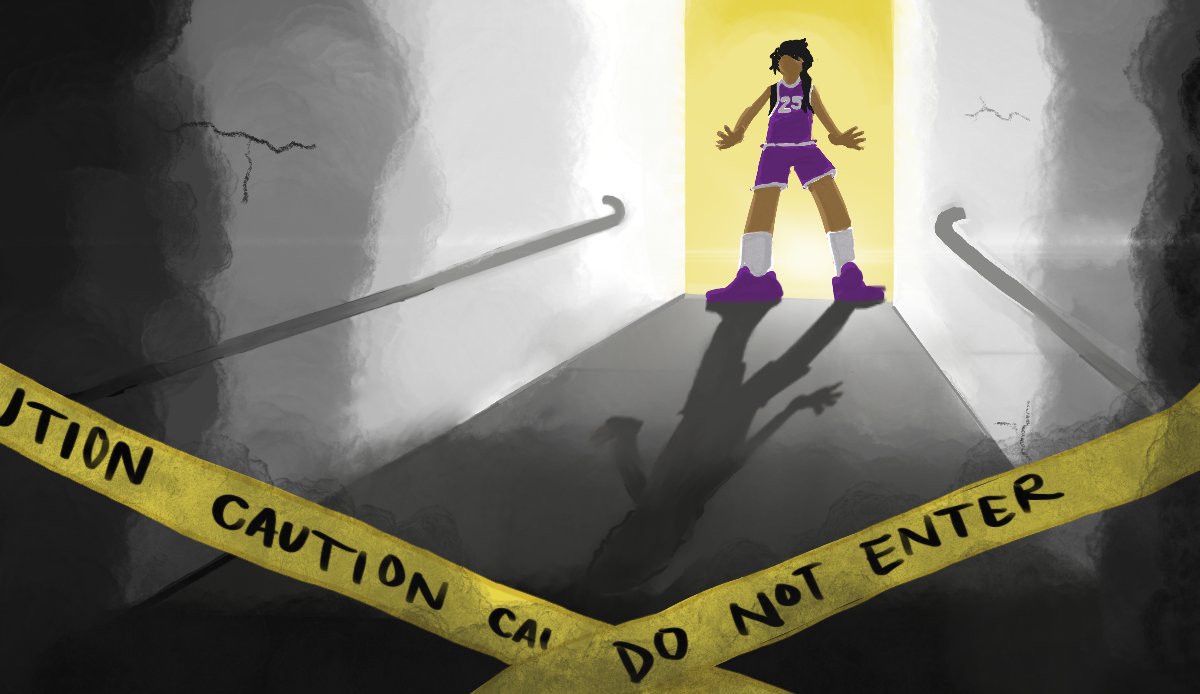If you’ve been in a building on campus in the last few weeks, it isn’t unlikely that you’ve noticed some moisture and perhaps even seen a few leaks. Unfortunately, a large number of the school buildings have sprung some serious leaks, which has caused a surplus of problems that require immediate attention.
Health and safety is a major concern for students and faculty.
According to Dean Peter Crabtree, reports of ground level and ceiling leaks in A-Building, C-Building, G-Building, the Library, the Gym, and underneath the Quad have come in to the facilities staff from all over campus. Some areas, however, may have still gone unnoticed or unreported since new leaks seem to be popping up quite often.
The leak in the Gym enabled water to collect in the walls and flood the floor. In A-Building, a large number of rooms are leaking from the ceiling, and several ground level leaks have been reported.
Light fixtures in many of these areas have taken on water. The Library has leaks coming in from the skylights, as well as a leak that has allowed water to collect under the carpeting on the third floor, causing a mildew problem.
The large pooling of water under the Quad is a possible source for cracking along the walkways and some of the ground level leaks in the surrounding buildings. In what might be the most serious concern, G-Building has leaks in rooms containing high voltage mechanical equipment, specifically G-160. This is a very serious safety concern for anyone working with or near that equipment.
All of these leakage details were discussed in depth on March 3 by the Laney facilities committee, which met to discuss the planning agenda. Among other things, they confirmed plans for a major renovation project taking place over the summer and for emergency repairs, but the main focus of the meeting was on the leaks.
In the planned agenda, only 10 minutes was allotted to discuss repairs, but the leaks alone required at least half an hour of discussion in order to make sure the committee members were up to speed on new reports and the plans to spearhead the repair project.
Other emergency repairs have been pushed back in order to make the leaks a top priority. Repairs should start in June, and will probably happen alongside the renovations project, which is planned to last five months.
Fiscally speaking, this is the most reasonable solution, since fixing the numerous leaks across campus will require ripping up planters, tearing up decks, taking out walls, and jackhammering out some concrete and dirt.
In reference to the list of emergencies that have been put on hold, Crabtree acknowledged, in jest, the irony in planning such “emergency” projects for next year.
The facilities committee also expressed that they appreciate the continued reporting of leaks. If students or faculty see any leaks or pooling of water, please report them to the facilities staff, even if you believe it may have already been reported.
Many buildings are still springing new leaks, and even repeating reports help the facilities staff to better understand the problem as a whole. If you see water near an electrical outlet or electrical equipment, report it immediately and stay away from the area.

























